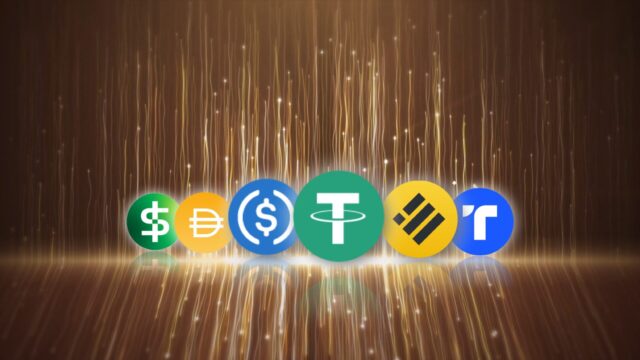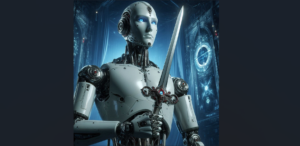AI and crypto: What happens when they meet?
Against the backdrop buzz of all things AI, there is a new trend emerging that feels full of possibility: What will happen when crypto is combined with AI?
So far, the trend seems to be positive and basically goes something like “AI+crypto=endless possibilities.” But what, exactly, are those possibilities? And is some kind of financial super intelligence even possible? And maybe even most important, are the two things even really compatible at any kind of meaningful level?
The 30,000-foot way of thinking about this is that AI represents digital abundance while crypto represents digital scarcity. Through another lens, AI represents highly centralized systems (information passed through language models). In some ways, this is like consolidation.
Crypto, on the other hand, represents the ideal of complete digital decentralization or developing distributed networks based on the fundamentals of permissionless accessand immutability, all controlled by private keys held by individual users. This is more like fragmentation.
In a revised intro to the book, The Sovereign Individual, venture capitalist Peter Thiel wrote,
In truth, the great conflict over our megapolitical future is only just beginning. On the dimension of technology, the conflict has two poles: Al and crypto. Artificial Intelligence holds out the prospect of finally solving what economists call the “calculation problem”: Al could theoretically make it possible to centrally control an entire economy. It is no coincidence that Al is the favorite technology of the Communist Party of China. Strong cryptography, at the other pole, holds out the prospect of a decentralized and individualized world. If Al is communist, crypto is libertarian.
The future may lie somewhere between these two extreme poles. But we know the actions we take today will determine the overall outcome.
The basic premise of the Sovereign Individual is that massive shifts in technology during our lifetime will give rise to more individual freedom — especially for the people that learn how to leverage the tools of the information age.
At the same time, the shift toward more individual freedom will come at the cost of major societal disruptions as geographical borders start to become less significant, and global technology platforms start to replace the need and utility of more localized government and civic groups.
And in this zoomed-out context, we see the emergence of crypto, which is built around the idea of individual control and custody, and AI, which is about exporting tasks and production to massive models.
So what happens when these two ideals or visions for the future of the internet intersect? Where does it lead, and how will it impact us?
Judging by early opinions across the internet, there seems to be a collective sense that the pairing of AI and crypto will be infinitely powerful and next-level everything by reducing the friction imposed by human-centered technology.
And in a lot of ways, it’s the human-centered design aspects of crypto that make it so challenging, things like UX, ease of interoperability, understanding the computer science problems crypto solves in the first place, etc.
So looking at it from that angle, maybe there is some synergy.
But it feels like a larger question looms: How well will these two major technological and philosophical movements mesh with each other? Or, do they actually represent competing ideas and visions?
Or, put a different way, what will happen when we give robots bank accounts with no off-switches? Is blind greed a component of general artificial intelligence, or is there something innate about human psychology that enables us to corner the market on wanting more and doing whatever we need to to get it?
AI and Crypto Potential Use Cases
One of the biggest promises of AI is that it will help humans throw off the yoke of digital drudgery by automating all kinds of routine tasks.
Finding issues or bugs in software, which in the past required hours of investigating code by someone with very specialized knowledge or skills, is one example.
Bugs in smart contracts and other crypto-related systems can cause havoc and present all kinds of security concerns. This is a real-world problem in DeFi and elsewhere when there is a heavy reliance on smart contracts.
Small vulnerabilities written into code can be exploited and cost millions (or billions) of dollars if a hacker is able to access the contract’s funds.
So what if there was some kind of AI bug bounty bots that were constantly testing and double-checking smart contract codes and other systems that are used to transfer and store digital assets?
It could be like an automated security force that could work at scale and easily work across jurisdictions and projects by leveraging the openness of decentralized systems.
Another example of incorporating AI into crypto and DeFi is that using AI’s language models and interfaces might help remove some of the complexity of crypto and make it more user-friendly and intuitive.
Rather than having to navigate the complexity of different kinds of offerings, or finding a product that matches a user’s exact specifications, what if people looking for financial alternatives could navigate DeFi products via chat?
Or have a simple way to compare and contrast all of the emerging DeFi products in a way that makes understanding their unique value propositions?
By removing friction, things will move faster and make seamless automation possible. After all, automation is great — when it works right.
Where the combo of crypto and AI gets a little bit more complex is when it comes to the governance of DeFi protocols and decentralized systems.
In some cases, making decisions about how protocols are governed — everything from underlying tokenomics and software upgrades to new kinds of products and services — is a challenge because it requires near-constant human attention.
According to the Binance paper about AI and crypto, there is something within the decentralized autonomous organization (DAO) called “governance fatigue.”
AI can help with this emerging grind of governance by becoming deputized to make decisions that fit within the scope of an individual user’s preferences.
On one hand, this is a little bit like having a self-driving car for governance. In many ways, it could be safer and more convenient. But, having deputized AI agents to start making decisions that have real impacts on the DAO could also have unintended consequences.
This leads to an even more complex territory: How do we manage autonomous artificial intelligence?
Privacy in a Time of Digital Abundance
Practicality and philosophical conundrums aside, combining crypto with artificial intelligence should raise privacy concerns.
Already, the dynamics of DeFi — the combo of openness and transparency enabled by distributed digital ledgers combined with enough details at the level of individual addresses to provide digital fingerprints (low resolution, maybe, but enough to establish patterns of behaviors for individual wallet holders) — is surfacing the need for better ways of protecting people using new tech stacks to conduct financial transactions.
Within the broader digital asset community, we are seeing the privacy protection conversation play out on numerous fronts, such as in the custodial/non-custodial wallet wars, the potential for government surveillance or interference if/when central bank digital currencies (CBDCs) happen, and with things like the use/need/legitimacy of tools like third party mixers.
At the same time, there are near-constant calls (in the United States, especially) to figure out how to regulate these new technologies independently.
On the crypto side, developing a regulatory framework is falling to agencies that typically develop and enforce financial rules and regs. On the AI side, who will be responsible for regulating a new kind of intelligence is less clear.
Regardless of which entities ultimately get tasked with regulating crypto and AI or the combo of crypto and AI, protecting individual user privacy should be a major point for everyone working with these frontier technologies to rally around.
This article was originally published by Daniel McGlynn on Hackernoon.











